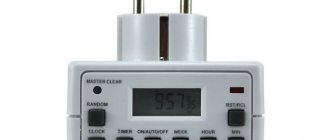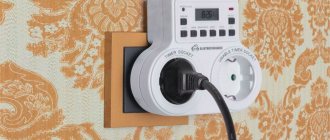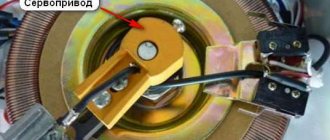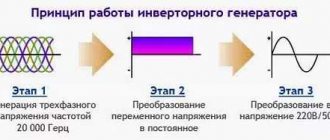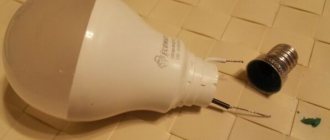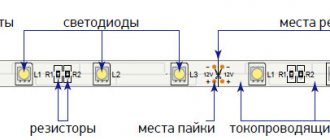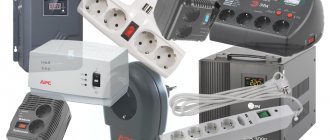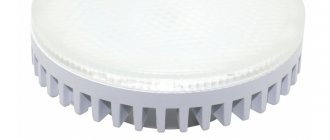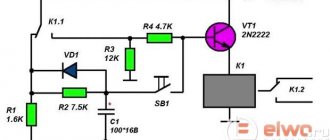In the context of the energy crisis, the concept of a smart home, according to which all processes are controlled electronically, is incredibly relevant. With the help of devices operating on the principle of a time relay, its individual elements can be easily implemented.
We will tell you how a timer socket works. The article presented for your review describes in detail what types of products the modern market represents and how they differ. Taking into account our tips, it will be easier to choose a smart device.
For a clear presentation of smart plugs, the text is supplemented with video presentations and photo collections.
What is a timer socket and where is it used?
A socket with a timer is an electrical device installed in a regular plug connection, used to connect external load elements and equipped with a timer that ensures that the load is turned off and turned off in accordance with the set time value. The on and off times are set using a timer, which can be of mechanical or electronic type. With the help of a time relay - timer, the possibilities of using household appliances and other electrical equipment are expanded. Such devices for use are included in a regular plug connection of a household electrical network with a voltage of 220 Volts. Using a timer for a 220 Volt outlet, you can:
- turn on various household appliances - a washing machine and an electric heater, an air conditioner and appliances used for cooking;
- turn on and off electric lighting - illumination of decorative elements and aquarium, external and emergency lighting;
- include various electronic devices - communications and communications equipment (router, Wi-Fi adapter, etc.), as well as an alarm and video surveillance system.
Models equipped with an electronic type of control are more functional than their mechanical counterparts, and the presence of a built-in battery (for some models) allows operation in an offline mode. Using a device with a double socket allows you to expand the degree of automation of the operation of connected equipment
Goodtime
A timer for fans of time management in the Pomodoro style. The principle of Goodtime is this: you start the countdown (by default the period lasts 25 minutes) and work without stopping. When the set period is up, you can reward yourself with a five-minute rest.
Ridding you of all distractions is the main goal of Goodtime. The application interface is extremely minimalistic. In addition, there is an option in the settings that turns off sounds, vibration and Wi-Fi on your smartphone while the timer is running.
Goodtime is controlled by gestures: swipe left and right to switch between options. Move up to add one minute to the countdown and down to stop the timer.
Advantages and disadvantages of such devices
The use of such devices simplifies the operation of various electrical equipment and household appliances, so the advantages of an outlet with a timer include the following indicators:
- is it possible to automate the process of turning on and off loads for various purposes? This is especially true for electronic devices;
- with correct settings, you can achieve a reduction in electrical energy consumption;
- The consumer sets the operating mode of the connected load elements independently in accordance with his schedule and rhythm of life;
When calculating for the consumed electrical energy in a two-tariff mode of use, the reduction in costs for paying bills, in the case of using sockets with a timer, can be reduced by 20-30%.
- in models with a built-in battery, the settings are saved even when the centralized power supply is turned off, which allows the connected devices to continue operating in the same cycle after voltage is supplied to the electrical network;
- the ability to create a simulation of the presence of people in an empty apartment (country house) will make it possible to secure it from illegal entry by unauthorized persons;
- The operating mode can be configured for a long service life.
Socket with a mechanical timer. Models equipped with an electronic timer have the main disadvantage that when the centralized power supply is turned off, the timer operation process does not stop, but works “by itself.” This may be undesirable when connecting heating appliances to such devices or turning on household appliances during a given use cycle (night time, etc.). Model “TG-14A” Devices with a mechanical control type have several more disadvantages, these include:
- inaccuracy of work in relation to the hourly cycle;
- the device “ticks” during operation, which can interfere, especially at night;
- programming mode is limited and lasts up to 24 hours;
- wear and tear of the timer mechanism leads to limited service life for such devices.
TG 14A
How different types of timers work and how they work
The principle of operation of a socket with a timer, regardless of its design, is based on switching contacts located in the device body under the influence of a time relay. In mechanical models, the basis of the contact group is a lever mechanism, while in electronic analogues there is an electronic programming and control system, which includes buttons (sensors) and an electronic display. Model "SBE-STM-1"
SBE STM 1
Mechanical
The name daily determines the possible period of use of such a device, limited to 24 hours - a day. The response time on mechanical timer sockets is set using a special drum, on which a scale is printed, divided into hours and minutes during the mode of use. The intervals for turning on and off the connected load are set by the manufacturer and cannot be changed independently.
So, when set to 20 minutes, the outlet will turn off after this period of use and turn on again after a similar period of time. The number of cycles during the day may vary, depending on the technical characteristics of a particular model. Model "Feron TM22/61925"
Feron TM22 61925
Electronic
An electronic on/off timer according to a given program is a more functional device, which is achieved by the possibilities of available settings. Operating modes can be set both at different time intervals during the day, and at longer periods of use. Such devices can be configured for the entire calendar week, and for some models - for a month or more.
DIN rail mounted
A distinctive feature of this type of timers is that they are installed in an electrical cabinet (panel), and a specific group of the electrical network is connected to them. The principle of operation and settings for timers of this type are the same as for those installed in a socket, and a standard DIN rail is used for mounting in an electrical cabinet. Model “TCD-2” for installation on a DIN rail Timers installed on a DIN rail come with mechanical and electronic control types and are used in single- and three-phase electrical networks, which is provided for by the specific model of the device.
Socket timer
Alarm
Open the “Clock” application, “Alarm” tab. To set an alarm, click on the plus sign at the bottom of the screen.
Next, set the alarm time and configure the following options:
- Repeat: once, daily, on weekdays, select days.
- Melody – select any song as an alarm clock.
- Vibrate on alarm – turn on/off vibration when the alarm goes off.
- Delete after triggering – deletes this alarm after being triggered once.
- Description – come up with your own name for this alarm clock.
To manually delete alarms: long press on the screen, select alarms with checkmarks and click “Delete” at the bottom of the screen:
To open general settings for all alarms, click on the three dots at the top right and select “Settings”.
The following options are available here:
- Triggered when the device is turned off - the alarm will ring even if the phone is turned off. This feature protects you if your phone runs out and you won't oversleep on your way to work. As you know, the phone turns itself off if the charge remains at 2-3% - this is necessary for some applications to work. In our case, it is an alarm clock.
- Default melody – so as not to set your favorite melody for a new alarm every time, select it here as the default for all alarms at once.
- Alarm Volume – Set the volume.
- Volume increase – the sound of the melody will gradually increase to the specified level. This will not scare you in the middle of the night with loud music.
- Notification before ringing – a notification will appear on the screen before the alarm rings.
- Signal repeat interval. If you did not turn off the alarm the first time after it went off, the alarm will repeat after 1-30 minutes (set manually).
To add a time zone, click on the plus sign at the bottom of the screen.
What to look for when choosing
Before you start choosing an outlet with a timer, you need to decide whether it is needed at all, and if it is needed, then in what capacity and for what purposes. This is due to the fact that the degree of process automation and, accordingly, the type of timer depend on the purpose. When choosing an outlet with a timer, the main criteria are indicators such as:
- Electrical power - this indicator determines how much power the load can be connected to a specific device model, and, accordingly, how much current can flow through the timer for a long time.
- Degree of protection – determines the possibility of placement in a particular place (indoors or outdoors, in damp or dusty rooms).
- Cyclic operation and settings parameters determine the possibilities of use in automatic mode and the functionality of the device.
- The manufacturer's brand determines the reliability of the device.
Three-line device model with extension cord
Making your own time relay on the 555NE timer
Many electrical circuits are based on the NE555 integrated timer. Such a system is easy to create at home. The controller is assembled from the following elements:
- screw type terminal blocks;
- diode;
- board size 65x35;
- resistor;
- soldering iron for point connections;
- Sprint Layout program file;
- NPN type bipolar transistor.
A board is used as the basis for mounting the elements. The resistor is attached to the top or removed using wires. There are special places on the board for screw terminal blocks. After all the components are soldered according to the diagram, the excess at the connection points must be removed and the reliability of the contacts checked. To protect the transistor, you need to install a diode. It is installed parallel to the relay. Then the response period is set. If the relay is placed at the output, it will allow the load to be adjusted.
DIY timer.
How this system works:
- Pressing the button starts.
- The circuit closes and voltage is supplied to the device.
- The light comes on and the countdown process starts.
- When the set time has passed, the light goes out and the power supply is interrupted.
This scheme allows you to adjust the response period within 4 minutes. If a capacitor is installed, the adjustable time increases to 10 minutes.
These are simple circuits that require minimal circuit board and electrical skills to create. A diverse and rich assortment of modern devices allows you to choose a connector for any need, so there is no need to independently manufacture sockets equipped with a timer. To find a suitable model, it is enough to compare its capabilities with the conditions in which it will be used, and also study reviews about manufacturers and the quality of their products on the Internet.
Popular timer models
The timer for turning electrical appliances on and off is not a widely used electrical installation product in our country. However, due to the growing interest of users in reducing energy consumption, such equipment is gradually winning over its consumers. Such devices can be purchased in stores and retail chains specializing in electrical products. This section of the article shows the most popular models of sockets with a timer.
Theben Timer 26
This fairly simple model with a mechanical timer is made in Germany. Its distinctive features are reliability and long service life. Appearance of the “Theben Timer 26” model The timer does not produce noise during use, which is convenient when using, and the on/off operating cycle is accompanied by a characteristic click. The maximum current load is 16 Amps. The average cost, as of the second quarter of 2018, is 1,800 rubles.
Theben Timer 26
Feron TM32
The model is equipped with a mechanical daily timer. It is easy to use and reliable. The average cost, as of the second quarter of 2022, is 400 rubles. Model "Feron TM32"
Feron TM22/61925
E.Next e.control.t11
This model with a mechanical timer is produced in Russia. Model “E.Next e.control.t11” Its distinctive features are ease of settings and ease of use. The average cost, as of the second quarter of 2022, is 500 rubles. Socket timer
E.Next e.control.t14
Another domestically produced model has an electronic timer in its design.
The available programming period is one week, with the ability to set operating cycles for each of these seven days. Electronic timer socket, model “E.Next e.control.t14” The maximum current load is 16 Amps. The average cost, as of the second quarter of 2022, is 2,000 rubles. Socket timer
Feron TM22/61925
Model with an electronic timer, also produced in Russia.
It belongs to the budget equipment segment, its average cost, as of the second quarter of 2022, is 800 rubles. The model is not reliable, which is confirmed by the manufacturer himself, giving a guarantee for two weeks of operation of the device. Model “Feron TM22/61925” Nevertheless, the model is in demand by users, as evidenced by their reviews. Feron TM22 61925
How to create a time relay in a 220V socket with your own hands
If the device is intended to be operated under a 220V load, you need to take diode options that are equipped with a magnetic starter. The controller is assembled from the following elements:
- thyristor;
- diodes (4 pcs.), 1A and 400V output;
- resistance (3 pcs.);
- start button;
- capacitor with a capacity of 0.47 mF.
Relay circuit with one transistor.
The operating principle of this scheme is quite simple. After pressing the start button, the network closes and the capacitor begins charging. At this moment, the thyristor is in the open state. When the charging of the capacitor is completed, it closes. As a result, the power supply stops and the device turns off.
To adjust the operation, you can select the appropriate capacitor power and resistance resistor (R3).
On a note! For low-power electrical appliances, you do not need to install a magnetic starter. In this case, the voltage can be converted by the thyristor and diode bridge present in the circuit.
You can also use this option:
- Connect one of the contacts of the diode bridge together with the switch to 220V.
- The second contact of the diode bridge is connected to the switch.
- Thyristor VT 151 is connected to resistance resistors (1500 and 200 Ohms), as well as to a diode.
- The remaining contacts of the diode and 200 Ohm resistor are connected to the capacitor. In parallel with it, a resistance of 4300 Ohms is switched on.
Relay on a microcircuit.
How to set a timer to turn electrical appliances on and off
Regardless of the brand and design of the timer and the location of its installation, the settings of devices of the same type are performed in the same way, namely:
- Setting up mechanical devices. Sockets with a mechanical timer are equipped with a rotating drum, on which there are markings that determine the cycle of switching on and the time interval. For models intended for installation on a DIN rail, the setting is performed using rotary controls, through which each parameter is set separately.
- Tincture of electronic devices. To set the operating modes of this type of timers, use the buttons located on the device body: TIMER and WEEK, DAY and ON, OFF and AUTO, as well as CLOCK, MINUTE and HOUR. The process of setting up a specific model is reflected in the operating instructions included in the package.
Electronic models are configured using buttons located on their body
Purpose
Timer is a device that counts down a specified time period when turned on. Typically, such products are equipped with a scale, potentiometer or dial, which is used to determine the time.
In this case, it is possible to set a specific period in daily or weekly cycles. Timers are often installed in the lighting system of entrances. They work when the door is opened and turn off after 0.5 minutes. Often such systems are supplemented with motion sensors.
The instructions for how the simplest time timer works look like this:
- Before using the product, you must click “Start”. After this, the report of the time set in advance using the time controller begins. The interval can be from 15 minutes to 10 hours.
- The subtlety of a simple timer is that after the end of the cycle and subsequent load shedding, it will require manual starting.
- At the output there is an electromagnetic relay that can operate on any load. In addition, there is a microcircuit consisting of a counter and a multivibrator. The counting occurs using an active-capacitive circuit.
The main function of the device is the distribution of installed processes. Timers actively work for industrial and domestic purposes: they are used in laboratories, the military-industrial sphere, and everyday life for cooking. Timers allow you to save electricity for lighting and other equipment.
